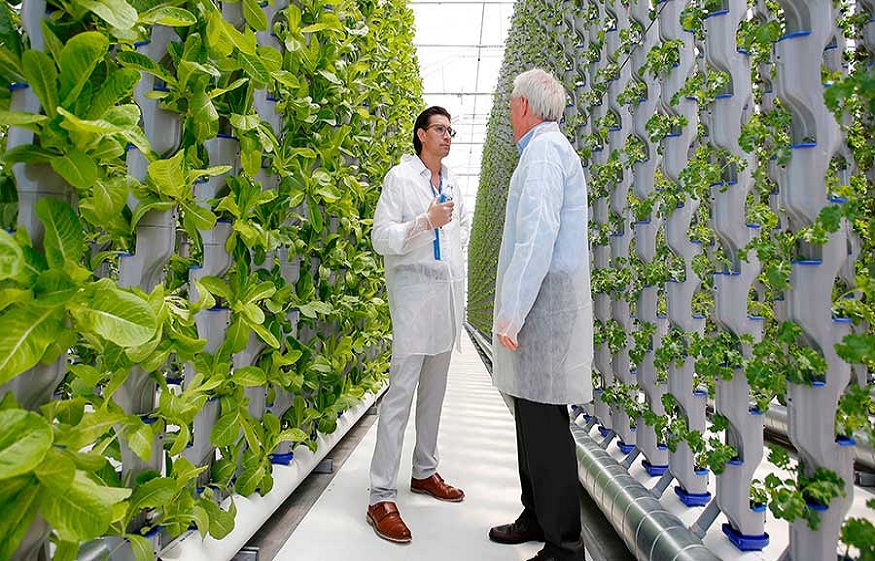
India is the most populous country on the planet. Every day, something new emerges in India. In addition, industrialization is rapidly rising, putting many arable lands at risk. In India, vertical farming in India is the solution to all of these issues. Vertical agriculture is a novel approach to keep our agricultural techniques going. In India, polyhouse farming is the most common type of vertical farming. Poly-house farming is a protected method of increasing vegetable and fruit output and yield in India.
Vertical farming has been observed on a modest scale in Nadia, West Bengal, and Punjab. Nadia’s Bidhan Chandra KrishiVishwa Vidyalaya has had initial success growing brinjal and tomatoes. In Punjab, vertical farming has proved successful in cultivating potato tubers. Vertical farms might feed the entire population if they were integrated into cities. Hence the need for research that accurately assesses the return on investment of different types of vertical farms.
For city people, vertical farming is a fantastic choice. It has the ability to improve global food security while also combating environmental issues. A severe weather disaster would have little effect on the yield. It has the advantage of being able to reduce the amount of cooling and heating water required by the interior temperature. It helps to alleviate poverty, ensure food security, and improve human well-being. Food supply, urban population and congestion, technological innovation, water and energy availability, and climatic conditions all influence the success of vertical farming.
Obstacles to Vertical Farming Adoption in India occur due to the wide range of climatic conditions in different regions of the world, uniform vertical farming processes are impossible to perform.Crop cultivars that are suitable for vertical farming are few. This aspect demands immediate attention from researchers, as the application of this technology will be difficult if suitable kinds are not available. There is a scarcity of information and skills for farming techniques among urban residents.
It is necessary to analyse the entire life-cycle analysis (LCA) and the number of years required to attain parity with a traditional farm. Researchers should design, improve, and further develop local agricultural practises to make vertical farm projects feasible in these countries. They could, for example, establish water-saving recycling methods, build local rainwater collection systems, and rely on local solar power to supply natural light and electricity.
As crops are grown vertically in a polyhouse, growers can make better use of space. As a result, the yield of this approach is increased three to four times. The ease with which crops can be pruned and trained can be another advantage of vertical crop production in a polyhouse technique. Pruning the plant on a regular basis greatly improves its growth, which helps you in the longterm.
There would not be enough farmers to sustain open-field farming in the coming years at the present rate of farming and the percentage of farmers required to handle crops. Young people, on the other hand, appear to be more interested in vertical farming because it allows them to use cutting-edge technologies. It is not necessary to live in rural areas to become a farmer; it may be done anywhere







